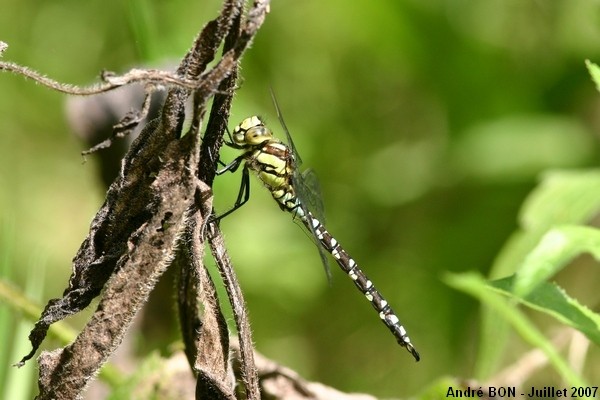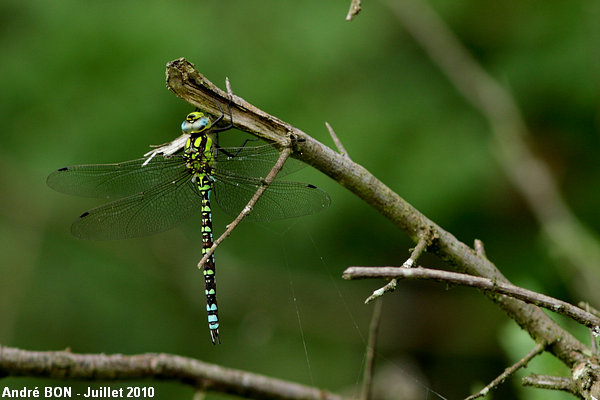

| Southern Hawker (Aeshna cyanea (Müller, 1764)) |


|
|
Scientific name: Aeshna cyanea (Müller, 1764) Common name: Southern Hawker French name: Aeschne bleue Order: Odonata Suborder: Anisoptera Family: Aeshnidae Wingspan: 97 to 110 mm. Biotope: The larvae grow in stagnant water, mainly in small forest ponds. Adults chase near woodland edges or in clearings. Geographic area: Europe, from the south of Scandinavia to the north of the Iberian Peninsula, east to the Caucasus. Missing in the north of the United Kingdom, in Ireland and in Greece. Flight time: June to October |
The Southern Hawker is one of our larger dragonflies with the Emperor dragonfly. The sides of the thorax are green yellow. They bear two bold black lines, one completely crossing the thorax, the other one ending at half width. There are two broad thoracic antehumeral stripes. The eyes are largely touching on the top of the head where they show two pale marks. There are blue marks on the sides of the abdomen and pairs of green marks on the top. The green mark pairs turn to blue and merge into single marks on the three ending segments. This is one of the most reliable key for the identification of this species. Pterostigma is rather short. The anal appendage has a sharp end, pointing down. |
| [To know more about the Southern Hawker ] [Next picture] [Top] |

|
I often observe Southern Hawkers flying near woodland edges. But they very seldom land so that you can take a picture. I still have one concern regarding the identification of this dragonfly. It is lacking green coloured marks. Is this an immature specimen? |
| [To know more about the Southern Hawker ] [Previous picture] [Top] |

|
At least one picture (but not perfectly sharp) where you can see the green dorsal marks becoming blue and merging on the three last segments of the abdomen. So there is no doubt about the identification of this species. |